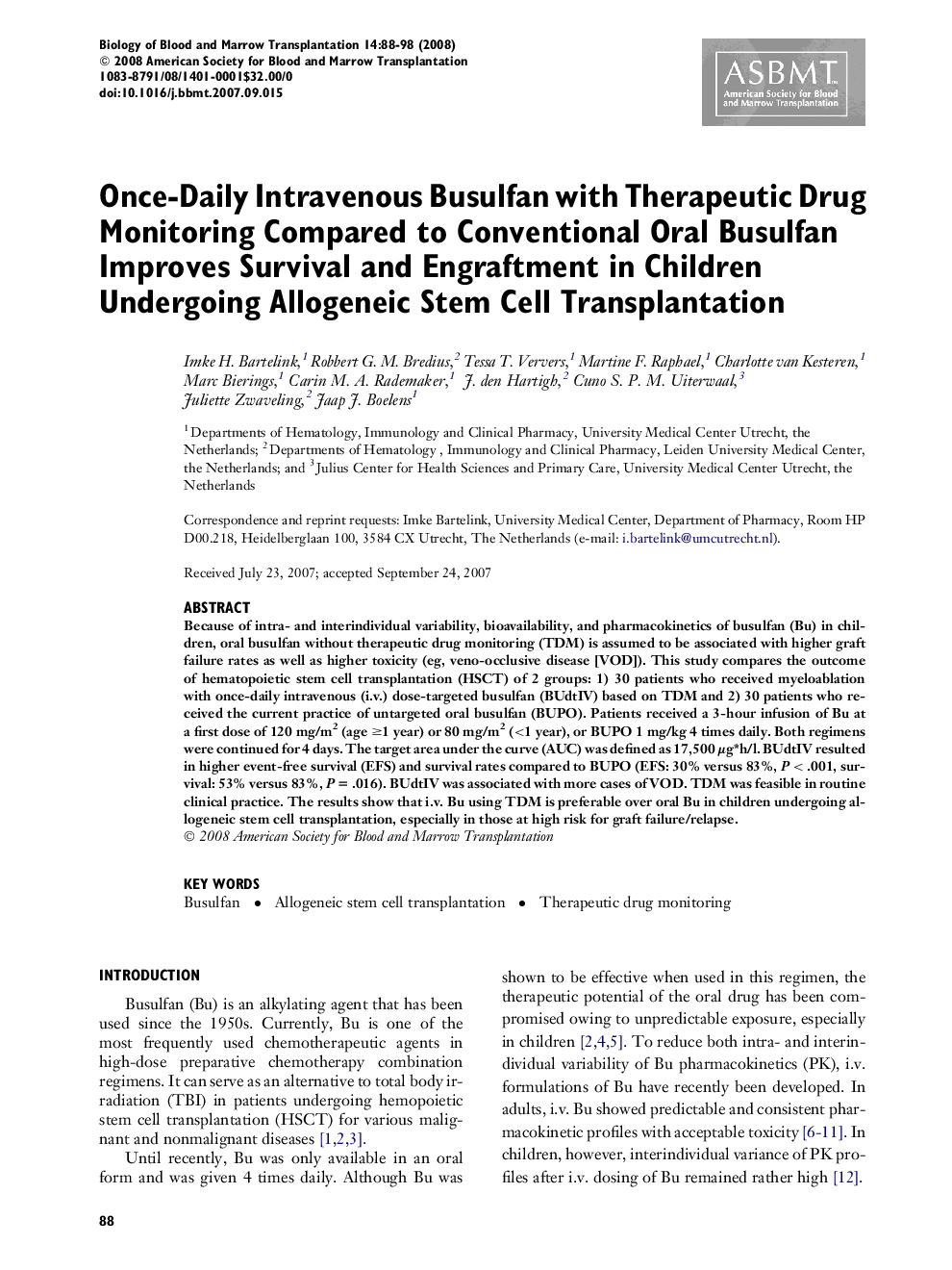| Article ID | Journal | Published Year | Pages | File Type |
|---|---|---|---|---|
| 2104548 | Biology of Blood and Marrow Transplantation | 2008 | 11 Pages |
Because of intra- and interindividual variability, bioavailability, and pharmacokinetics of busulfan (Bu) in children, oral busulfan without therapeutic drug monitoring (TDM) is assumed to be associated with higher graft failure rates as well as higher toxicity (eg, veno-occlusive disease [VOD]). This study compares the outcome of hematopoietic stem cell transplantation (HSCT) of 2 groups: 1) 30 patients who received myeloablation with once-daily intravenous (i.v.) dose-targeted busulfan (BUdtIV) based on TDM and 2) 30 patients who received the current practice of untargeted oral busulfan (BUPO). Patients received a 3-hour infusion of Bu at a first dose of 120 mg/m2 (age ≥1 year) or 80 mg/m2 (<1 year), or BUPO 1 mg/kg 4 times daily. Both regimens were continued for 4 days. The target area under the curve (AUC) was defined as 17,500 μg∗h/l. BUdtIV resulted in higher event-free survival (EFS) and survival rates compared to BUPO (EFS: 30% versus 83%, P < .001, survival: 53% versus 83%, P = .016). BUdtIV was associated with more cases of VOD. TDM was feasible in routine clinical practice. The results show that i.v. Bu using TDM is preferable over oral Bu in children undergoing allogeneic stem cell transplantation, especially in those at high risk for graft failure/relapse.
